
Allium crispum is a species of wild onion known by the common name crinkled onion. It is endemic to California, where it grows along the Central Coast in the Coast Ranges and in the Santa Monica Mountains, often in clays and serpentine soils. It is a perennial herb that is typically found in the foothill woodlands and valley grasslands of California.
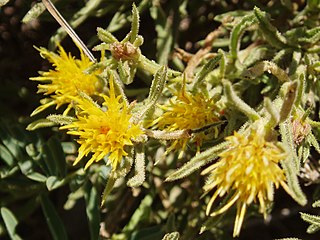
Ericameria discoidea, commonly known as whitestem goldenbush or sharp-scale goldenweed is a species of flowering shrub in the family Asteraceae. This plant is native to the western United States from California, Oregon, Nevada, Utah, Colorado, Idaho, and Montana.
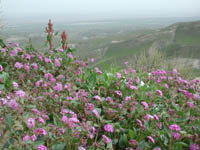
Abronia pogonantha is a species of flowering plant in the four o'clock family (Nyctaginaceae) known by the common name Mojave sand-verbena. It is native to California and Nevada, where it grows in the Mojave Desert, adjacent hills and mountains, and parts of the San Joaquin Valley in the Central Valley.
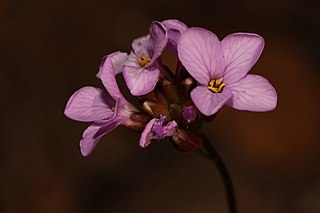
Arabis aculeolata is a species of flowering plant in the mustard family known by the common name Waldo rockcress.
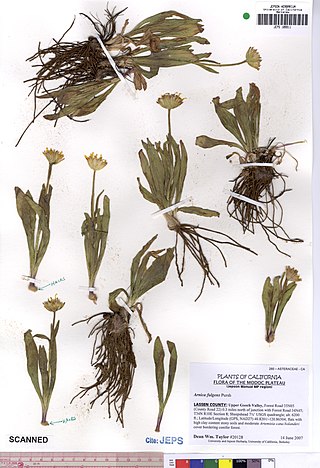
Arnica fulgens is a species of arnica known by the common names foothill arnica and hillside arnica. It is native to western North America, from British Columbia east to Saskatchewan and south as far as Inyo County, California, and McKinley County, New Mexico. It grows in open, grassy areas.
Astragalus bicristatus is a species of milkvetch known by the common names crested milkvetch and two-crested milkvetch. It is endemic to southern California, where it grows in the coniferous forests of the San Gabriel and San Bernardino Mountains of the Transverse Ranges.
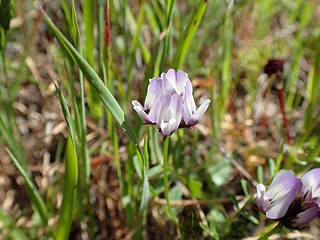
Astragalus breweri is a species of milkvetch known by the common name Brewer's milkvetch. It is endemic to northern California, where it is found in several counties surrounding the north edge of the San Francisco Bay Area. It grows in open habitat in the North Coast Ranges, sometimes on serpentine soils.
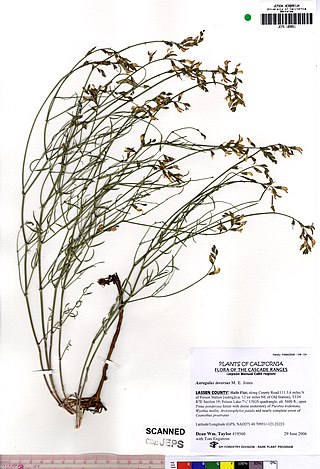
Astragalus inversus is a species of milkvetch known by the common name Susanville milkvetch.
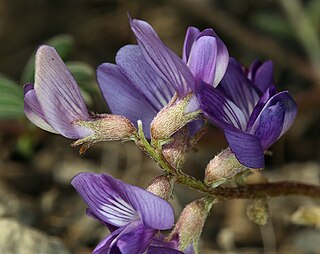
Astragalus inyoensis is a species of milkvetch known by the common name Inyo milkvetch.
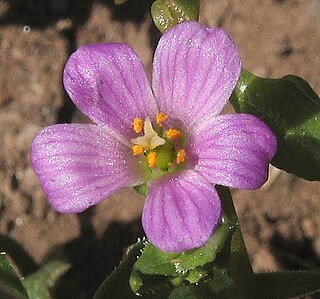
Calandrinia breweri is a species of flowering plant in the family Montiaceae known by the common name Brewer's redmaids.
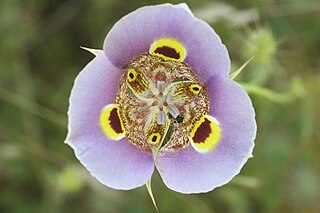
Calochortus superbus is a North American species of flowering plants in the lily family known by the common name superb mariposa lily. It is endemic to California, a common member of the flora in several types of habitat across much of the state. It is most abundant in the Coast Ranges and in the Foothills of the Sierra Nevada.

Calochortus vestae is a California species of flowering plants in the lily family known by the common name coast range mariposa lily. It is grows primarily in the forests of the North Coast Ranges of California, with additional populations in the southernmost Cascades in Shasta County and also in foothills of the Sierra Nevada. It generally grows in clay soils.

Eriogonum brachyanthum is a species of wild buckwheat that is commonly known as shortflower buckwheat. It is native to eastern California and western Nevada, particularly the Mojave Desert region, where it is common to abundant, and even sometimes weedy. It is also known from southern Oregon. The plant grows in sandy habitats such as desert flats and sagebrush. It also grows in pinyon-juniper and montane conifer woodlands. It is an annual herb that grows 30 to 40 centimeters tall. Leaves are located at the base of the stem, woolly, and oval or rounded in shape. The top of the stem is occupied by a branching inflorescence bearing many widely spaced clusters of flowers. Each individual flower is about a millimeter wide and light yellow in color. Flowers bloom from April to November.

Lupinus brevicaulis is a species of lupine known by the common names shortstem lupine and sand lupine. It is native to the southwestern United States, including Oregon, California, Nevada, Utah, Colorado, Arizona, and New Mexico, where it grows in many types of sandy habitat.
Lupinus hyacinthinus is a species of lupine known by the common name San Jacinto lupine. It is native to the mountains of southern California and adjacent Baja California, where it grows in dry areas, often in pine forests.
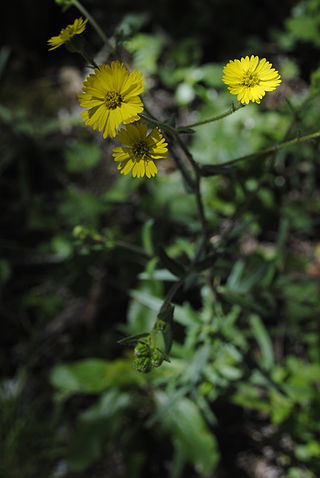
Anisocarpus madioides is a North American species of flowering plant in the family Asteraceae known by the common name woodland madia.

Ranunculus eschscholtzii is a species of buttercup flower known by the common name Eschscholtz's buttercup.

Arnica lanceolata is a North American species of flowering plant in the family Asteraceae, known by the common name clasping arnica or lanceleaf arnica. It has a disjunct (discontinuous) distribution in western North America and northeastern North America.
Carex ozarkana, the Ozark sedge, is a species of flowering plant in the family Cyperaceae, native to the U.S. states of Oklahoma, Texas, Arkansas, and Louisiana.

Delphinium madrense, commonly known as Sierra Madre larkspur and Edwards' Plateau larkspur, is a species of plant in the family Ranunculaceae. It is native to the south-western United States (Texas) and northern Mexico.


















